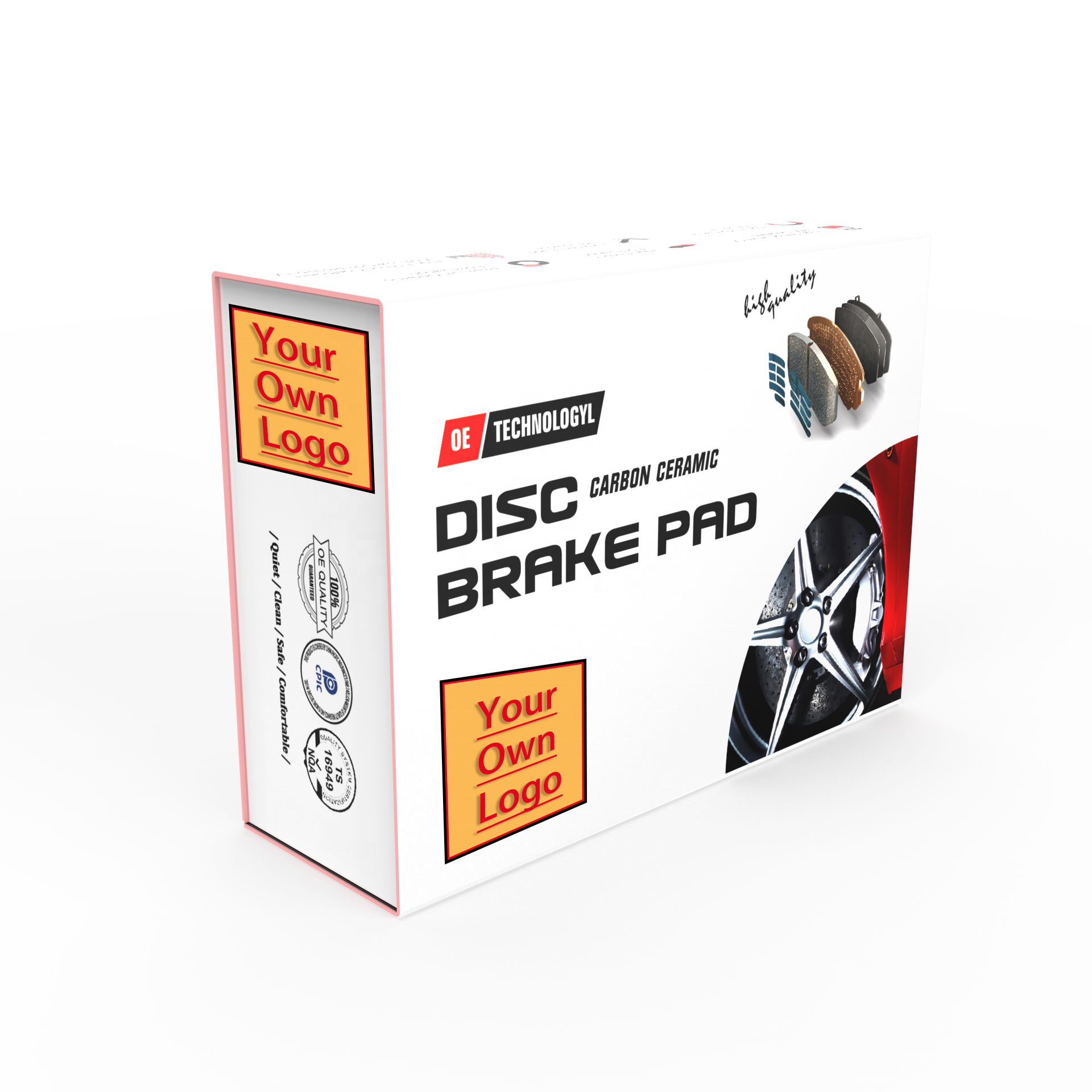Understanding Modern Brake Pad Technologies for Optimal Vehicle Performance
When it comes to vehicle safety and performance, few components are as crucial as your brake pads. The brake pad material you choose significantly impacts your vehicle's stopping power, durability, and overall driving experience. Today's market offers various options, each with distinct characteristics that cater to different driving needs and conditions. Whether you're a daily commuter, performance enthusiast, or someone who prioritizes low maintenance costs, understanding brake pad materials is essential for making an informed decision.
The evolution of brake pad technology has led to sophisticated materials engineered to meet specific performance requirements. From noise reduction to heat dissipation, each brake pad material brings unique advantages to the table. Let's explore the characteristics, benefits, and ideal applications of different brake pad materials to help you make the best choice for your vehicle.
Ceramic Brake Pad Technology
Composition and Manufacturing Process
Ceramic brake pad material represents the newest innovation in braking technology. These pads consist primarily of dense ceramic compounds mixed with copper fibers, creating a material that excels in multiple performance aspects. The manufacturing process involves precise temperature control and molding techniques to ensure consistent density and performance characteristics throughout the pad.
The copper fibers embedded within the ceramic matrix serve a dual purpose: they help conduct and dissipate heat while enhancing the pad's friction properties. This sophisticated composition results in a brake pad that maintains stable performance across a wide range of temperatures and driving conditions.
Performance Benefits and Limitations
The advantages of ceramic brake pads are numerous. They produce minimal brake dust, operate quietly, and provide consistent stopping power across various temperature ranges. The ceramic compound's stability means less fade during repeated heavy braking, making these pads excellent for daily driving and moderate performance applications.
However, ceramic brake pad material comes with certain limitations. The initial cost is typically higher than other options, and in extremely cold conditions, they may require longer warm-up times to achieve optimal performance. Additionally, while excellent for daily driving, they may not provide the absolute maximum stopping power needed for track use or extreme performance applications.
Semi-Metallic Brake Pad Engineering
Material Composition and Design
Semi-metallic brake pads contain a significant percentage of metal content, typically 30-65% by weight, mixed with friction modifiers and binding agents. The metal content usually includes steel wool, copper, or iron powder, providing excellent heat transfer properties. This composition makes them particularly effective at handling high temperatures and heavy braking demands.
The design of semi-metallic pads incorporates various metal particles of different sizes and shapes, creating a complex friction surface that optimizes braking performance. The metal content also helps conduct heat away from the rotor, reducing the risk of brake fade during intense use.
Application and Performance Characteristics
Semi-metallic brake pad material excels in high-performance and heavy-duty applications. These pads provide excellent stopping power and heat dissipation, making them ideal for sports cars, performance vehicles, and trucks that frequently carry heavy loads. The robust nature of semi-metallic pads also contributes to their longer lifespan under demanding conditions.
The trade-offs include increased rotor wear, higher noise levels compared to ceramic options, and more visible brake dust. However, for drivers who prioritize maximum stopping power and heat management, these compromises are often acceptable given the superior performance benefits.

Organic Brake Pad Properties
Natural and Synthetic Components
Organic brake pad material consists of natural materials like rubber, glass, kevlar, and carbon, bound together with high-temperature resins. These pads, also known as non-asbestos organic (NAO) pads, offer a more environmentally friendly option compared to their metallic counterparts. The combination of materials creates a softer compound that's gentle on rotors and provides quiet operation.
The manufacturing process involves carefully mixing and heating these components to create a uniform compound that maintains its integrity under normal braking conditions. The result is a brake pad that's particularly well-suited for everyday driving situations.
Durability and Environmental Impact
While organic brake pads excel in terms of environmental compatibility and quiet operation, they typically have a shorter lifespan compared to ceramic or semi-metallic options. They're more susceptible to wear, especially in high-temperature conditions, and may produce more brake dust than ceramic pads. However, their softer composition means less wear on brake rotors, potentially reducing long-term maintenance costs.
The environmental benefits of organic brake pad material extend beyond their composition. The manufacturing process generally requires less energy, and the materials are more easily recycled at the end of their service life. This makes them an attractive option for environmentally conscious drivers who primarily engage in normal city and highway driving.
Selection Criteria for Different Driving Conditions
Climate and Environmental Factors
The effectiveness of brake pad material varies significantly with climate conditions. Ceramic pads perform exceptionally well in moderate to warm climates but may require longer warm-up times in cold weather. Semi-metallic pads maintain consistent performance across temperature ranges, making them suitable for all-weather use. Organic pads work best in moderate conditions but may experience accelerated wear in extreme temperatures.
Environmental considerations also play a role in selection. Regions with strict environmental regulations may favor ceramic or organic options due to their lower environmental impact and reduced brake dust emissions. Drivers in mountainous areas might prefer semi-metallic pads for their superior heat handling capabilities during extended downhill braking.
Driving Style and Vehicle Type
Your driving habits and vehicle specifications should heavily influence your brake pad material choice. Performance enthusiasts and drivers of high-powered vehicles typically benefit from semi-metallic pads' superior stopping power and heat management. Daily commuters in urban environments might prefer the quiet operation and low dust characteristics of ceramic pads.
Vehicle weight and typical usage patterns also matter. Heavy vehicles or those frequently carrying loads may require the durability of semi-metallic pads, while lighter vehicles used primarily for city driving can benefit from the gentle characteristics of organic or ceramic options.
Frequently Asked Questions
How often should brake pads be replaced?
The replacement interval for brake pad material varies depending on driving conditions, pad type, and vehicle usage. Generally, ceramic pads last 30,000-70,000 miles, semi-metallic 30,000-60,000 miles, and organic 20,000-40,000 miles. Regular inspection is recommended, and replacement should occur when pad thickness reaches about 3-4mm.
Can different brake pad materials be mixed on the same vehicle?
While technically possible, mixing different brake pad materials is not recommended. Using different materials on front and rear axles can lead to uneven braking performance, increased stopping distances, and potentially dangerous handling characteristics. Always install the same brake pad material on all wheels for optimal safety and performance.
What causes brake pad squealing, and how can it be prevented?
Brake pad squealing can occur with any brake pad material and is often caused by vibration between the pad and rotor. Ceramic pads typically produce the least noise, while semi-metallic pads are more prone to squealing. Proper installation, using quality shims, and regular maintenance can help prevent unwanted noise regardless of the pad material chosen.

